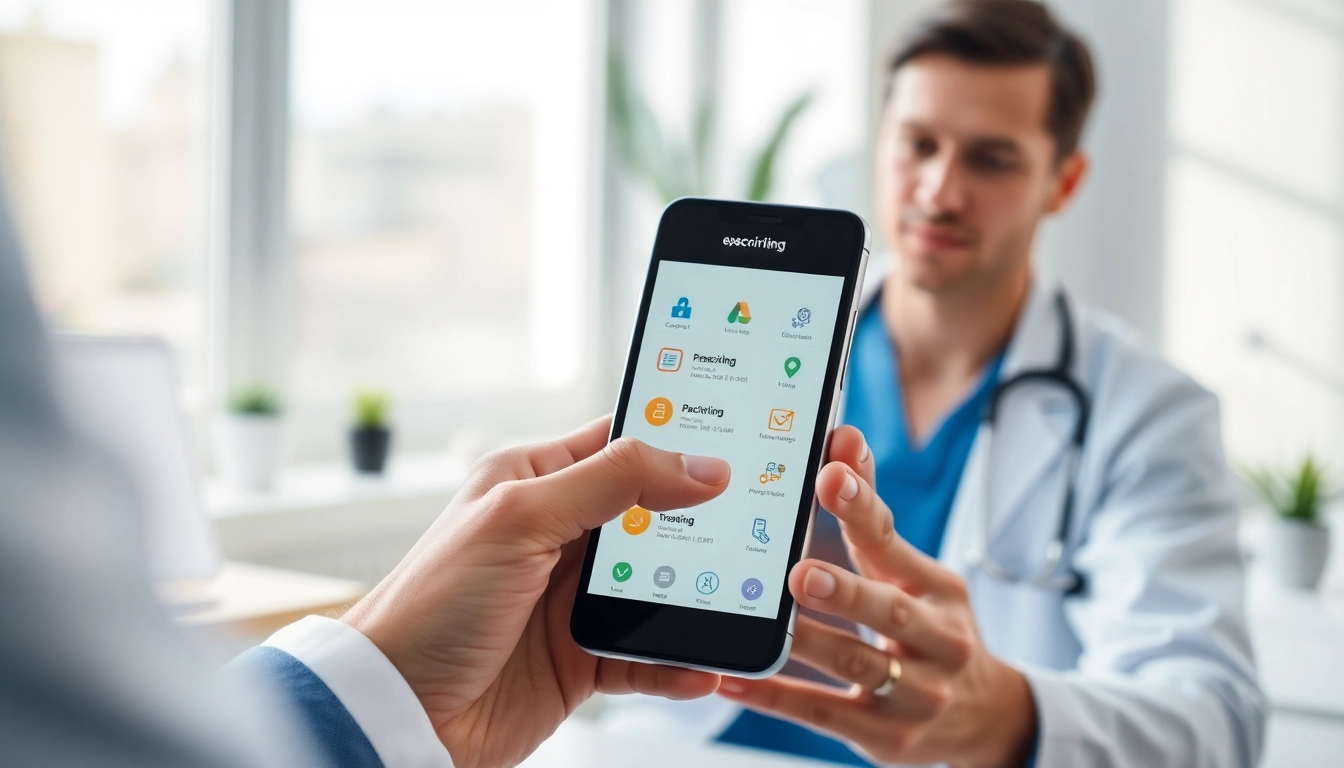Introduction to E-Prescription Apps for Android
In the fast-evolving world of healthcare technology, eprescription apps for android stand out as a cornerstone for modern medical practices. These applications facilitate a streamlined process for prescribing medications, allowing healthcare professionals to enhance patient care and maintain accuracy in prescriptions. As telemedicine continues to gain traction, e-prescribing emerges not just as a convenience, but as an essential component in delivering seamless healthcare services.
Understanding E-Prescribing
E-prescribing, or electronic prescribing, enables healthcare providers to send prescriptions directly to pharmacies electronically, eliminating the need for handwritten prescriptions. This system improves workflow efficiency, reduces the chances of errors due to illegible handwriting, and allows for instant access to patient records. E-prescription apps typically integrate with Electronic Health Records (EHR) systems, ensuring that healthcare providers have all necessary patient information at their fingertips.
Importance of E-Prescription in Modern Healthcare
The importance of e-prescribing cannot be overstated. As the healthcare industry matures, the shift towards digitization and interoperability is essential. E-prescribing significantly contributes to these trends by:
- Enhancing Patient Safety: By minimizing prescription errors, e-prescribing promotes better health outcomes.
- Improving Workflow Efficiency: Automating prescription processes saves time for healthcare providers, allowing them to focus on patient care.
- Facilitating Medication Adherence: Patients can receive timely refills and notifications, leading to better compliance with medication regimens.
Key Benefits of Using E-Prescription Apps for Android
Using e-prescription apps on Android devices presents a multitude of benefits:
- Accessibility: With smartphones being ubiquitous, healthcare professionals can access e-prescribing tools anytime, anywhere.
- Real-time Updates: Providers can receive immediate updates on drug interactions and allergies, enhancing patient safety.
- Streamlined Communication: Direct communication between providers and pharmacies reduces the delays often associated with traditional prescriptions.
Features to Look for in E-Prescription Apps for Android
User-Friendly Interface
A user-friendly interface is paramount in e-prescription apps. Healthcare professionals often have tight schedules and need applications that allow efficient navigation and function. Look for apps that prioritize ease of use with intuitive layouts, clear icons, and straightforward navigation. Features such as voice typing and medical abbreviations can further enhance usability.
Integration with Health Records
Integration with Electronic Health Records (EHR) is a critical feature in e-prescription applications. This ensures that healthcare professionals can access patient histories, allergies, and other important data without unnecessary delays. Comprehensive integration enhances accuracy and helps prevent adverse drug reactions by aligning prescription capabilities with patient-specific information.
Security and Compliance Features
Given the sensitivity of healthcare data, security is a non-negotiable feature of any e-prescription app. Look for applications that comply with regulations such as HIPAA, which mandates secure handling of patient information. Features such as data encryption, two-factor authentication, and secure access protocols should be standard.
Comparative Analysis of Popular E-Prescription Apps for Android
Top Features of Leading Apps
As you evaluate various e-prescription apps, consider the array of features offered by the leading applications:
- Prescription History Tracking: Many apps provide a detailed history of past prescriptions, helping providers make informed decisions.
- Patient-specific Formulary: This feature helps healthcare providers identify covered medications based on patient insurance, streamlining the prescribing process.
- Automated Alerts: Alerts for potential drug interactions or allergies can greatly enhance patient safety.
User Reviews and Ratings
User feedback is instrumental in evaluating e-prescription apps. Examine ratings and reviews on platforms such as app stores and healthcare tech forums to gain insights into user satisfaction. Look for apps that consistently receive high ratings for functionality, support, and overall effectiveness.
Cost and Accessibility Considerations
When assessing e-prescription apps, cost is an important factor. It is essential to consider not just upfront costs, but also ongoing fees, maintenance, and any additional service charges. Many apps offer free trials or subscription models, which allows practices to test the application before fully committing. Additionally, ensure that the app is accessible across multiple Android devices to cater to diverse user needs.
Implementing E-Prescription Solutions in Your Practice
Evaluation of Practice Needs
Before implementing an e-prescription solution, it is crucial to evaluate the specific needs of your practice. Consider factors such as the size of your practice, the types of patients you serve, and the current systems in place. A thorough needs assessment will aid in selecting the right app that aligns with your operational goals and enhances efficiency.
Training Staff on New Technology
Effective training is essential when introducing new technology into a healthcare setting. Ensure that all staff members understand how to use the e-prescribing app effectively. Training sessions should cover not just the technical aspects of using the app, but also emphasize the importance of e-prescribing in improving patient care. Providing ongoing support can also help in overcoming any resistance to change.
Monitoring and Assessing Effectiveness
After implementing e-prescribing solutions, it is vital to monitor their effectiveness continuously. Set key performance indicators (KPIs) such as prescription turnaround times, error rates, and user satisfaction scores to evaluate the app’s performance. Periodically assessing these metrics can highlight areas for improvement and provide insights into optimizing workflows further.
Future Trends in E-Prescription Apps for Android
Emerging Technologies in E-Prescribing
The future of e-prescribing is closely tied to advancements in technology. Innovations such as artificial intelligence and machine learning are set to revolutionize e-prescribing applications, enhancing decision-making capabilities. These technologies can analyze large datasets to provide insights into prescribing patterns, improving both individual and population health outcomes.
The Role of Telehealth in E-Prescription
As telehealth continues to expand, its integration with e-prescribing is becoming increasingly crucial. E-prescribing apps that seamlessly work with telehealth platforms enable healthcare providers to issue prescriptions during virtual visits, thereby improving the continuity of care. This holistic approach ensures that patients receive comprehensive treatment plans that address their needs.
Predictions for E-Prescription Growth and Innovation
As more healthcare professionals adopt e-prescribing technology, we can anticipate rapid growth and innovation in this field. The integration of blockchain for secure health information exchange, personalized medicine, and enhanced patient engagement tools are just a few developments on the horizon. Embracing these innovations will be key to transforming healthcare delivery and improving patient outcomes.



